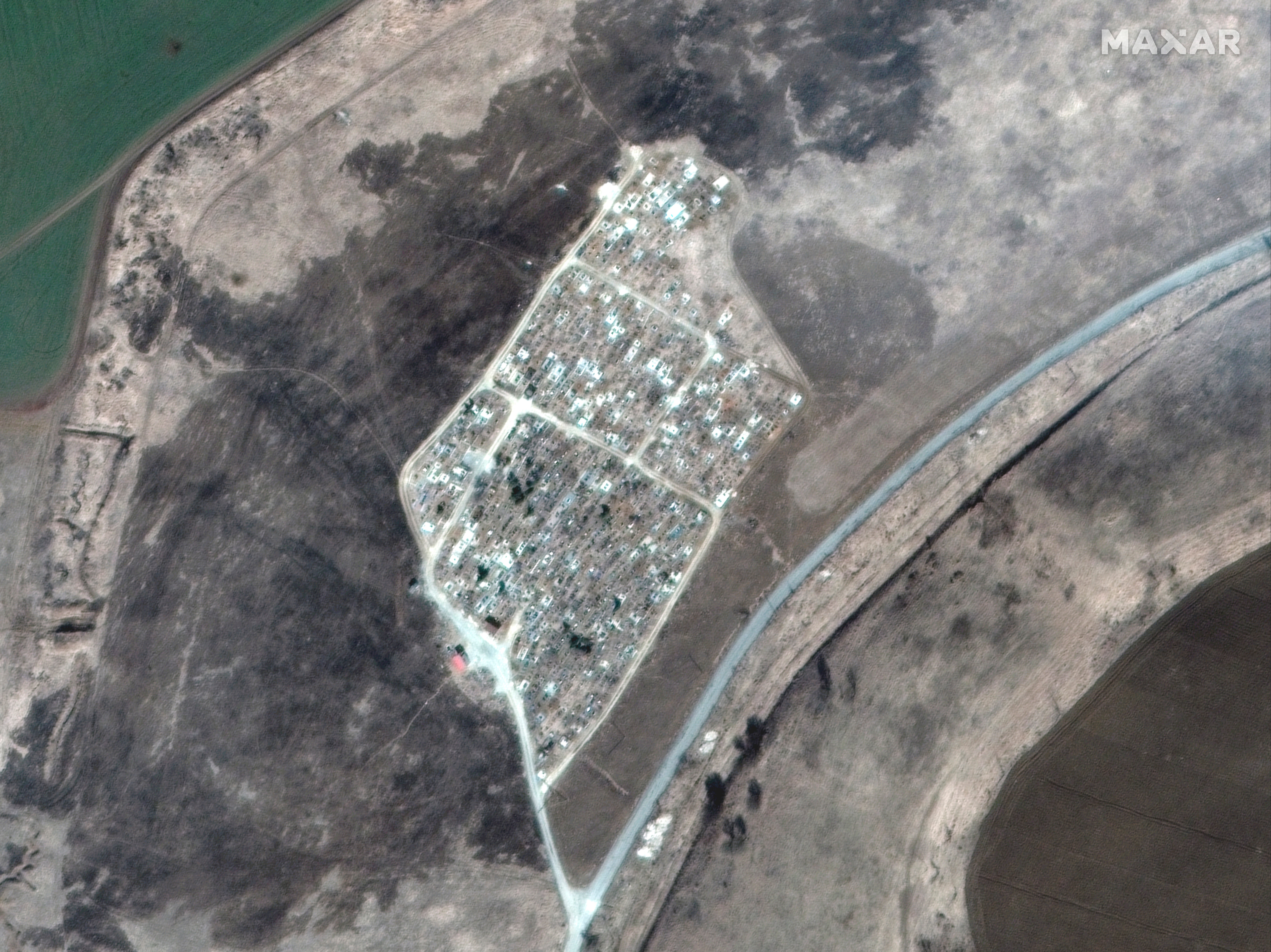Another mass grave has been found outside the Ukrainian city of Mariupol, the city council and an adviser to the mayor said.
The city council posted a satellite photo showing what it said was a mass grave - stretching 45 metres by 25 metres - that they said could hold the bodies of at least 1,000 Mariupol residents.
It said the new reported mass grave is outside the village of Vynohradne, which is east of Mariupol.
Earlier this week, satellite photos from Maxar Technologies revealed what appeared to be rows upon rows of more than 200 freshly dug mass graves in the town of Manhush, located to the west of Mariupol.

Local officials accused Russia of burying up to 9,000 civilians in the war-torn port city in an effort to conceal an alleged slaughter that took place.
Mayor Vadym Boychenko accused the Russians of “hiding their military crimes” by taking the bodies of civilians from the city and burying them in Manhush.
The graves could hold as many as 9,000 dead, the Mariupol City Council said in a post on the Telegram messaging app.
Mr Boychenko labelled Russian actions in the city as “the new Babi Yar,” a reference to the site of multiple Nazi massacres in which nearly 34,000 Ukrainian Jews were killed in 1941.
Mr Boychenko and the Mariupol city council have previously accused Russia of using mobile crematoriums to conceal evidence of war crimes and said it was an example of “murderers covering their tracks”.
“The bodies of the dead were being brought by the truckload and actually simply being dumped in mounds,” an aide to Mr Boychenko, Piotr Andryushchenko, said on Telegram.
Mass graves and dead civilians have also been discovered in Bucha and other towns around Kyiv after Russian troops retreated three weeks ago, despite Russian officials accusing Ukraine of staging the atrocities. Many bodies showed signs of being raped and tortured.
Maxar said a review of previous images indicates that the graves in Manhush were dug in late March and expanded in recent weeks.
Russian forces appear largely to control the strategic southern city of Mariupol. There remain, however, around 1,000 Ukrainian troops and up to 1,000 civilians in the Azovstal steel plant, which is now surrounded by Mr Putin’s troops.
Mr Boychenko rejected any notion that Mariupol had fallen into Russian hands. “The city was, is and remains Ukrainian,” he declared. “Today our brave warriors, our heroes, are defending our city.”
The capture of Mariupol would represent the Kremlin’s biggest victory yet of the war in Ukraine.
It would help Moscow secure more of the coastline, complete a land bridge between Russia and the Crimean Peninsula, which Russia seized in 2014, and free up more forces to join the larger and potentially more consequential battle now underway for Ukraine’s eastern industrial heartland, the Donbas.







